A Chemise a la Reine
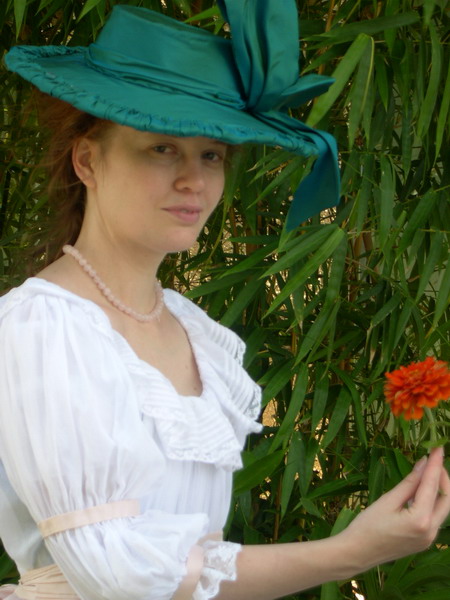 The chemise a la reine was
first known as a gaulle and was popularized by and renamed after Marie Antoinette in the 1780s. It was an alternative to the heavier, more structured dresses
then fashionable.
|
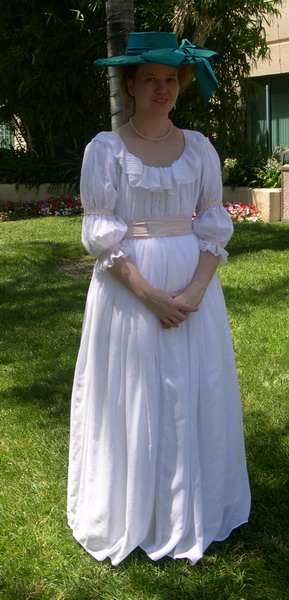 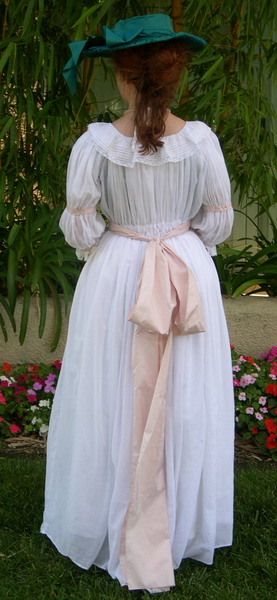 |
| The dress from the front and back. The style is very simple. It's a large tube of fabric with shoulder straps. The back is gathered to fit, and the neckline and waist are pulled in to fit with drawstrings. |
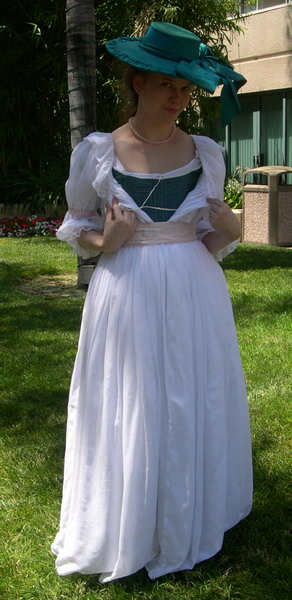 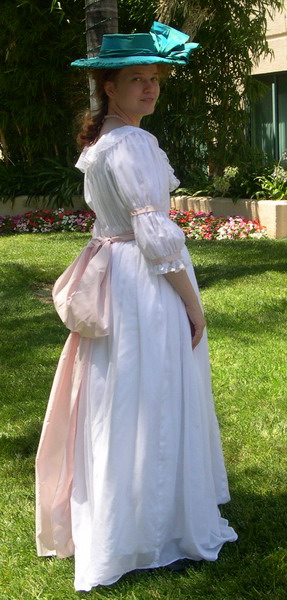 |
| The dress is open from the waist to the neckline. The original in the diagram was open all the way down the center front, but many portraits show what appears to be a closed front. The sash is made of three lenghths of silk taffeta which are whipstitched together at the selvages. |
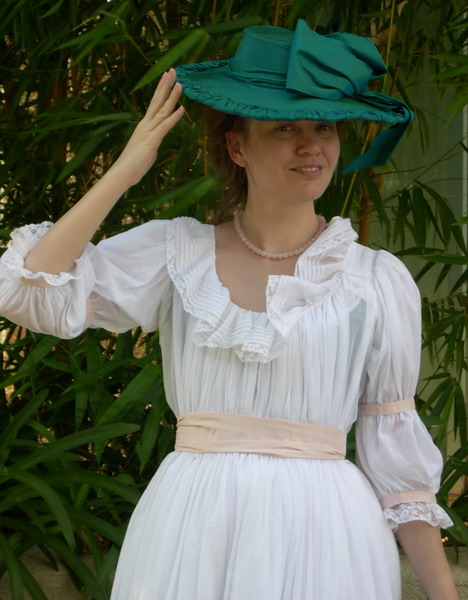 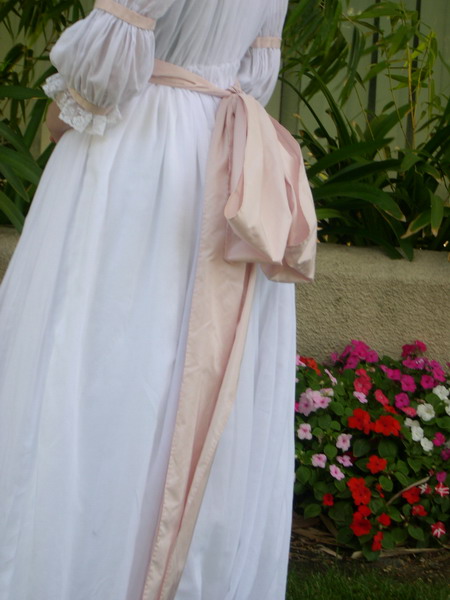 |
|
The whip gathered neckline flounce is tucked and trimmed with lace. To attach the flounce, I first pulled the neckline in so it mostly fit and then sewed the
flounce down. My first idea was to sew the flounce to the entire length, but fortunately, Aubry tried that first
and found that it didn't work. |
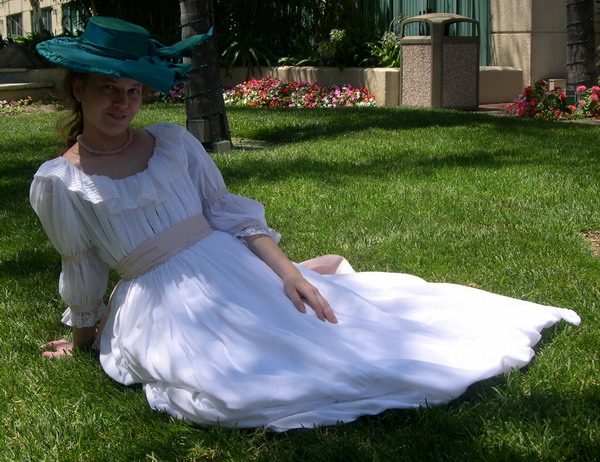 A front view sitting in the dress. |
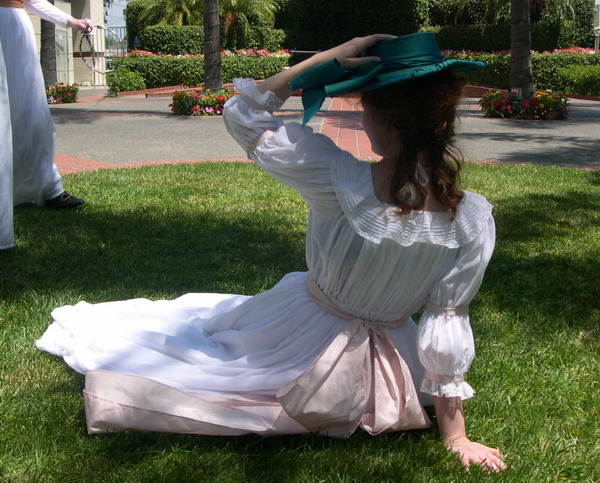 And a back view of the same. |
Construction
My Costumes
The Eighteenth Century
 I'd
like to go home!
I'd
like to go home!